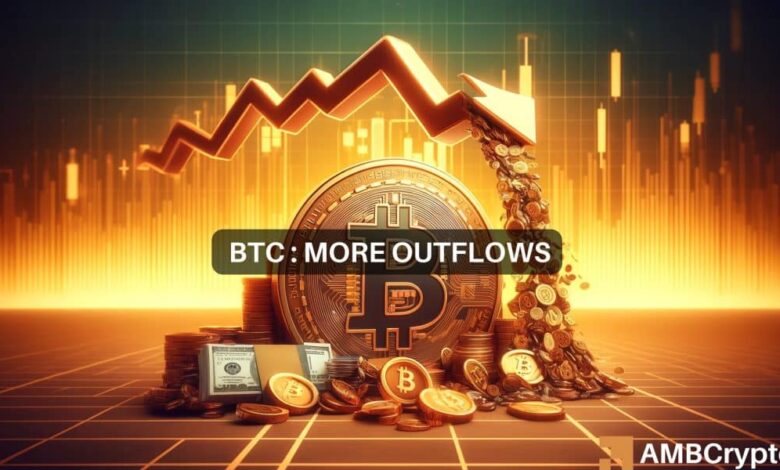Can Bitcoin above $66K reverse the $206 million outflows?


![]()
Journalist
- Digital asset investment products recorded $206 million outflows last week.
- Bitcoin led the outflows by $192 million amidst Fed interest rate fears.
Outflows from digital asset investment products more than doubled last week, hitting a two consecutive bearish streak. According to a CoinShares report, the outflows totaled $206 million.
Bitcoin [BTC] led the outflows by $192 million, followed by Ethereum [ETH] at $32 million.
Bitcoin leads the outflows
Compared to the prior week ($106 million), last week’s outflows were twice as high, underscoring investor’s risk-off approach.
The US dominated the bearish sentiment, with US ETFs (exchange-traded funds) accounting for $244 million in outflows.
Additionally, the demand for new spot BTC ETFs waned as inflows remained muted compared to previous weeks.
AMBCrypto’s spot check on Farside Investors data confirmed this. Between 15th and 18th April, US spot BTC ETFs recorded a total of $264 million in outflows.
Total volumes linked to Bitcoin also shrank over the same period, which the report linked to interest fears.
Part of the report read;
“The data suggests appetite from ETP/ETF investors continues to wane, likely off the back of expectations that the FED is likely to keep interest rates at these high levels for longer than expected.”
However, surprisingly, only a handful of investors grabbed the opportunity to short Bitcoin amidst interest fears as short-Bitcoin products only saw US$0.3 million outflows, per the report.
On the altcoin front, ETH’s $32 million outflows marked its 6th week in a row, underscoring ETH’s rough start in Q2. Solana [SOL] and Bitcoin Cash [BCH] followed closely, each with $0.3 million in outflows.
However, Chainlink [LINK] and Litecoin [LTC] recorded substantial inflows, indicating that they were investors’ favorites over the same period.
It’s worth noting that US spot BTC ETFs recorded net inflows on April 19th and 20th as BTC recovered above $66K.
It will be interesting to see if this will switch investors from risk-off to risk-on and shore up inflows for digital asset investment products.



